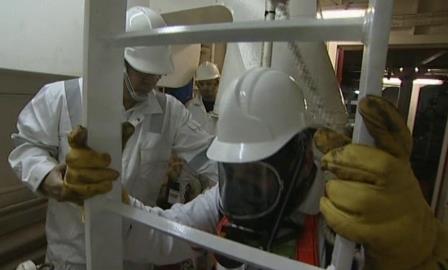It has emerged that the master of the Chinese bulker ‘Nasco Diamond’ refused to load a nickel ore cargo just days before liquefaction sank the ship
The Chinese master of the bulker Nasco Diamond warned that a cargo of nickel ore was too wet and refused to load it just days before liquefaction of the cargo caused the ship to sink, claiming his and 21 other seafarers’ lives in November 2010.
The worrying insight into the loss of the 56,800-dwt bulker comes in three separate reports into a series of liquefaction linked losses from the Panamanian flag, which registered the ships.
The world’s largest flag state has produced the reports nearly three years after the incidents. The reports come with the flag state under pressure from industry to investigate the losses and ahead of a high profile International Maritime Organisation (IMO) safety meeting.
According to the report, the then virtually new Nasco Diamond (built 2009) arrived at Kolonodale port in Indonesia to load a 55,000 tonne cargo of nickel ore in October 2010.
The cargo was loaded from barges, which were open and exposed to intermittent heavy rain, raising the concern of the master to the extent he did not want to load it.
On 2 November, Captain Xie wrote to the shipper, Tongli Shipping Ltd, and shipping company Great Pacific Navigation telling them he did not want to sail with the cargo.
“We find the cargo in this barge is very wet, and contain [sic] plenty of water” he wrote. “In view of the above the fact (sic), I, the master of the MV Nassco Daimond (sic), regret to submit this notice in advance to reject to receive this cargo, the ship, the owner, is not responsible for any loss.”
Photographs attached to the e-mail warning clearly show the nickel ore cargo in a mud like state.
Yet on 4 November, the ship sailed fully loaded heading for the Chinese port of Lian Yun Gang. And the Panamanian report does not offer any explanation on how the master was persuaded to sail with a cargo he clearly believed to be dangerous. It only commented: “The ultimate responsibility for the safe loading of the ship rests with the master and on the Nasco Diamond the master is reported to have full charge of the loading.”
By 1111 hrs on 9 November, the master reported to owners that the vessel had developed a 3° list with up to 60 centimetres of slurry seen to have developed in several of the cargo holds.
Despite desperate efforts to correct the list and prevent free surface effect by use of pumps and bilges and to stabilise the ship by sailing into the wind, it remained in trouble. By 2040 hrs of the same day, calls to the ship by the owner’s emergency response team were not answered.
The ship had seemingly gone down without time to send out an emergency distress signal. The Chinese, Taiwanese, South Korean and Japanese coastguards were informed and a navigational telex (Navtex) was sent out to local shipping. Three crew were rescued and two bodies recovered.
Tests before loading showed a cargo moisture content of 30.8% — very close to the transportable moisture limit (TML) of 30.25%. As a guide, cargoes should not be loaded if the moisture content exceeds the TML. No further samples were taken after loading when the cargo had been exposed to heavy rain.
Panama has produced two further separate reports on the loss of the 50,000-dwt Hong Wei (built 2001), which sank with the loss of 10 crew in December 2010, and the 45,000-dwt Jian Fu Star (built 1982), which went down in October 2010 with the loss of 12 crew. All were trading nickel ore.



